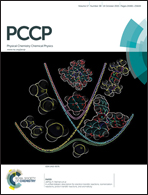Flexible Ag–C60 nano-biosensors based on surface plasmon coupled emission for clinical and forensic applications†
Abstract
The relatively low sensitivity of fluorescence detection schemes, which are mainly limited by the isotropic nature of fluorophore emission, can be overcome by utilizing surface plasmon coupled emission (SPCE). In this study, we demonstrate directional emission from fluorophores on flexible Ag–C60 SPCE sensor platforms for point-of-care sensing, in healthcare and forensic sensing scenarios, with at least 10 times higher sensitivity than traditional fluorescence sensing schemes. Adopting the highly sensitive Ag–C60 SPCE platform based on glass and novel low-cost flexible substrates, we report the unambiguous detection of acid-fast Mycobacterium tuberculosis (Mtb) bacteria at densities as low as 20 Mtb mm−2; from non-acid-fast bacteria (e.g., E. coli and S. aureus), and the specific on-site detection of acid-fast sperm cells in human semen samples. In combination with the directional emission and high-sensitivity of SPCE platforms, we also demonstrate the utility of smartphones that can replace expensive and cumbersome detectors to enable rapid hand-held detection of analytes in resource-limited settings; a much needed critical advance to biosensors, for developing countries.


 Please wait while we load your content...
Please wait while we load your content...